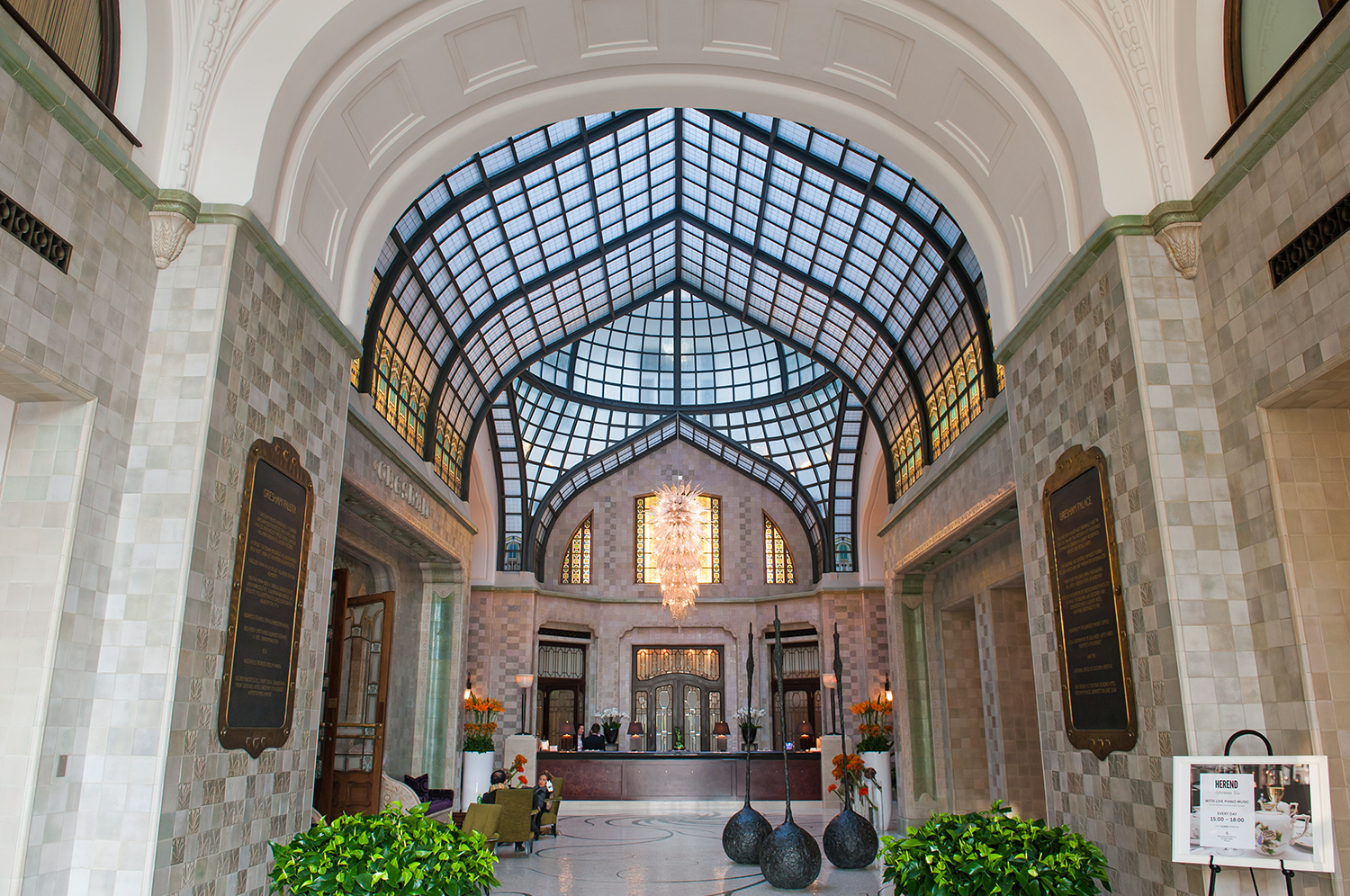1/10
Great Synagogue
Found within Budapest’s bustling District VII, Europe’s largest Judaic temple is the center of Hungary’s thriving Jewish community with prayers held here every day of the week, while those who would like to learn more about the building’s history and admire its architectural splendor can join on-site guided tours provided in multiple languages. In addition, the adjacent Hungarian Jewish Museum and Archives houses a collection of Judaic relics, and it’s open for anyone to visit.
2/10
Gresham Palace
As a highlight of Budapest’s picturesque Danube bank, this palatial Art Nouveau building was always filled with life. Initially serving as the headquarters of the London-based Gresham insurance company, the building was later turned into a deluxe property with high-class apartments and offices, and in 2004 this glamorous edifice was revived as a luxury property of the Four Seasons Hotel Chain. However, the beauty of this ornate building’s interior is not restricted to hotel guests, as the hotel’s lobby is open for anyone to visit.
3/10
Hungarian National Museum
When the Magyars united against the oppressive Habsburg Empire on March 15th of 1848, thousands of fired-up citizens gathered in front of the National Museum, which had opened its doors just two months before the revolution broke out. Today, this historic Hungarian site houses a grand permanent exhibition of the country’s archaeological, historical, and ethnic relics with major temporary displays dotting its schedule, welcoming crowds of culture aficionados.
4/10
Hungarian State Opera
The masterpiece of Hungarian architect Miklós Ybl has been shaping the cityscape and Budapest’s bustling cultural scene since 1884. The neo-Renaissance edifice can seat an audience of 1,300 at a time, and visitors flock here from all over the world to see world-famous stage performances (including Tscaikovsky’s Nutcracker, which plays here every Christmas season) and enjoy the building’s excellent acoustics. Moreover, visitors can sign up for group guided tours that are provided every day here in multiple languages.
5/10
Keleti Railway Station
Many people who arrive to Budapest by train will roll into Keleti Railway Station, one of the city’s masterfully decorated architectural landmarks that has been serving as a major traffic hub for long-distance train lines for over a century. This eclectic edifice was severely damaged during both World Wars, but it repeatedly reclaimed its crucial role and today serves thousands of passengers with 410 trains departing and arriving every day, including several international rail lines.
6/10
Liszt Ferenc Academy of Music
Melodic tunes resonate across Budapest’s tree-shaded as students of the globally revered music conservatory practice for upcoming performances. However, besides functioning as Hungary’s premier music-education establishment – which fostered leading Hungarian maestros including Zoltán Kodály, Béla Bartók, and Zoltán Kocsis – this 110-year-old Art Nouveau building also serves as a major event space for musical programs with a sophisticated crowd filling its grand concert hall.
7/10
Matthias Church
Peaking high in the sky above the and the panoramic , Matthias Church was founded in the 13th century and has since become one of Budapest’s postcard-superstar attractions. While it offers church services and prayers every day of the week, the sacred site regularly hosts pipe-organ concerts, and those who want to enjoy all-encompassing views of the cityscape can ascend its recently reopened spire, from whence visitors can even admire the colorful Zsolnay tiles that cover the roof.
8/10
Parliament
The Gothic-style masterpiece of Hungarian architect Imre Steindl is considered one of the biggest parliament buildings in the world, measuring 268 meters in length and 96 meters in height. Serving as the active seat of Hungary’s government and its house for lawmaking, a part of the building – including where the Holy Crown of Hungary is kept – is open to visitors, and it attracts hundreds every day who can catch glimpses of the Parliament’s imposing interior during multilingual guided group tours.
9/10
St. Stephen’s Basilica
Named after Hungary’s founding king, this hallowed monument is one of Budapest’s most frequently photographed landmarks, but it’s also an active house of worship with regular masses held here, while its massive pipe organ frequently calls music lovers to enjoy spirit-boosting concerts. Many visitors pay pilgrimage to the sacred site to see the country’s most revered religious relic – the mummified Holy Right Hand of St. Stephen – that’s displayed inside the ornate edifice.













